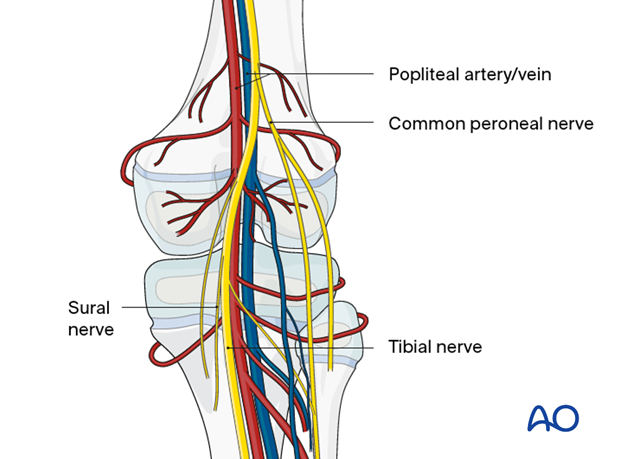Neurovascular anatomy
1. Vascular anatomy of the proximal femur
The deep branch of the medial femoral circumflex artery (MFCA) provides the main relevant blood supply to the femoral head. Maintaining this blood supply is vital in the skeletally immature patient.
The MFCA originates from the deep femoral artery (profunda femoris), courses between the iliopsoas and pectineus muscles, and runs posteriorly between the femur and the pelvis.
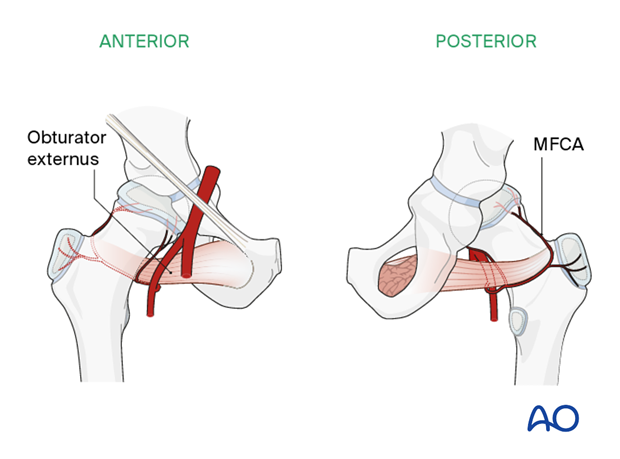
The main branch of the MFCA is related to the inferior border of the obturator externus muscle and passes posterior to the femur, towards the intertrochanteric crest.
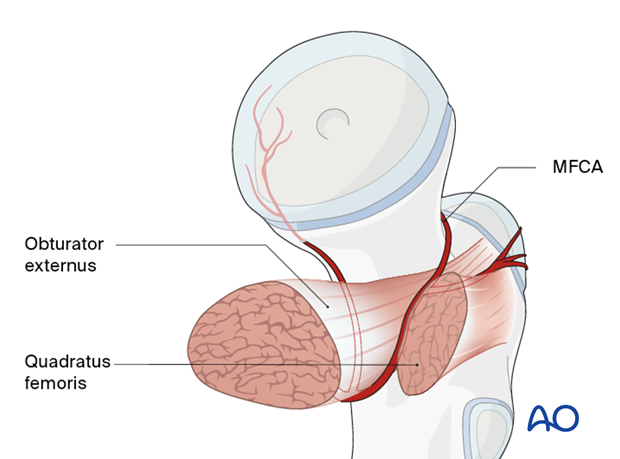
It then crosses posterior to the obturator externus and anterior to the triceps coxae (obturator internus and the superior and inferior gemelli).
Before crossing the triceps coxae, a small branch passes to the greater trochanter.
The vessel enters the joint capsule between the gemellus superior and the piriformis muscles.
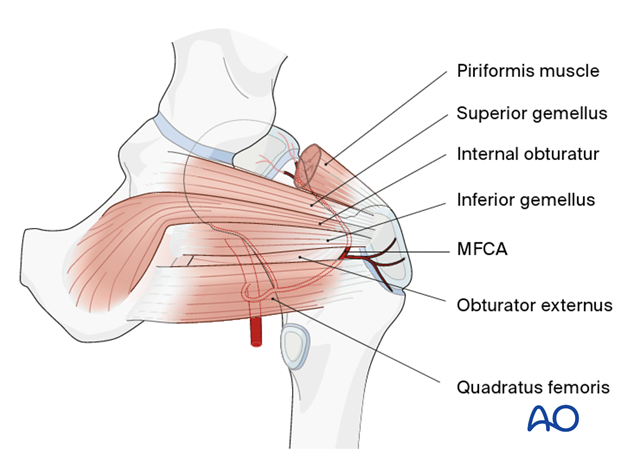
After perforating the capsule, the vessel passes along the superior retinaculum and splits into 3–4 branches.
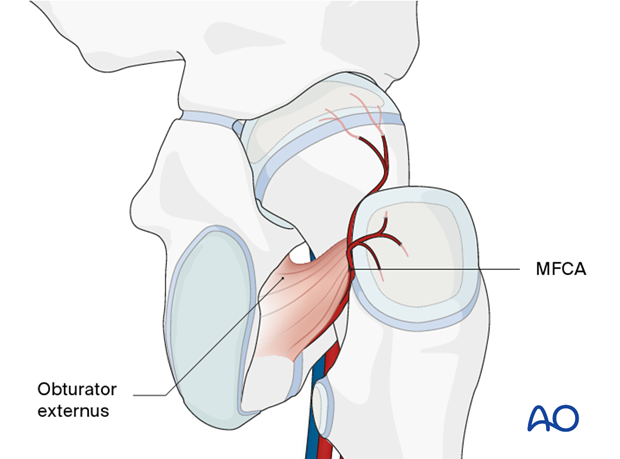
2. Neurovascular anatomy of the femoral shaft
The diaphysis of the femur is surrounded by a thick muscular envelope. The major neurovascular structures are located medially and, therefore, the femur can be safely approached from laterally. The internervous plane lies along the posterior border of vastus lateralis.
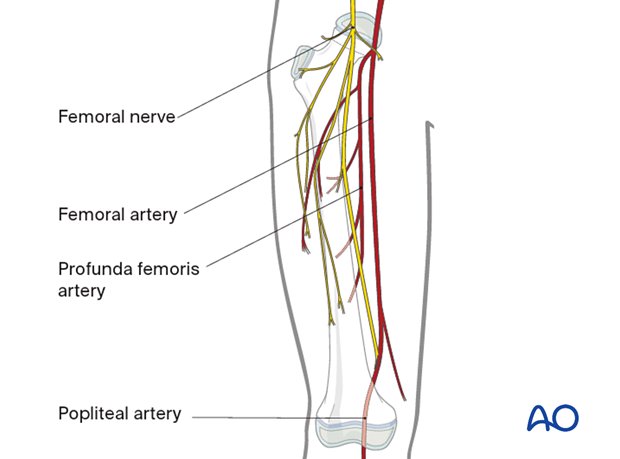
3. Neurovascular anatomy of the distal femur
The popliteal artery lies directly behind the distal femoral metaphysis. Therefore, it may be at risk during anteroposterior screw insertion.
